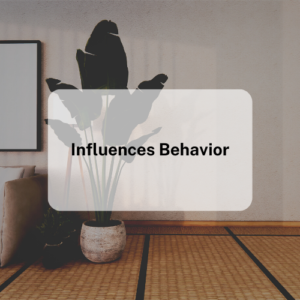How does Interior Design Impact Society?
Interior design is not just about creating aesthetically pleasing spaces, but it also has a significant impact on society as a whole. From the way we live and work to our health and well-being, interior design plays a vital role in shaping our daily lives.
In this article, we will explore how interior design impacts society.
Creates a Sense of Place and Identity

Interior design helps to create a sense of place and identity. It is through interior design that we are able to express our individuality and personal style. When we enter a space, the design elements within it give us a sense of the intended purpose of that space.
Whether it is a cozy living room or a busy restaurant, the interior design of the space helps to establish its character and purpose.
Supports Local and Global Economies

The interior design industry supports both local and global economies. Interior designers work with a wide range of materials, furnishings, and finishes, all of which are produced by manufacturers and suppliers. This industry provides jobs to manufacturers, suppliers, and retailers, contributing to the overall economy.
Additionally, interior design has an impact on the real estate market. A well-designed space can increase the value of a property, contributing to the growth of the housing market. This, in turn, can have a positive impact on the economy as a whole.
Enhances Quality of Life

Interior design can have a significant impact on our quality of life. A well-designed space can promote relaxation and reduce stress levels. Studies have shown that environments that incorporate natural elements such as daylight and greenery can improve mental and physical health.
Interior designers can also address issues such as accessibility and safety, making spaces more inclusive and welcoming to all.
Promotes Sustainability

Interior design has a role to play in promoting sustainability. Designers can incorporate sustainable materials and practices into their designs, reducing the environmental impact of a space. This can include the use of recycled or repurposed materials, energy-efficient lighting, and the incorporation of renewable energy sources such as solar panels.
By promoting sustainable design practices, interior designers can contribute to the fight against climate change and reduce our reliance on non-renewable resources.
Influences Behavior

Interior design can influence our behavior in a variety of ways. The design of a space can encourage social interaction, promote productivity, or encourage relaxation. It can also influence our perception of space and the activities that are appropriate within it.
For example, a brightly lit, open space with comfortable seating may encourage people to linger and socialize, while a dimly lit, quiet space may encourage concentration and focus.
Supports Health and Wellness

Interior design can also support health and wellness. By incorporating elements such as natural light, greenery, and ergonomic furniture, interior designers can promote physical health and reduce the risk of workplace injuries.
Designers can also incorporate features such as soundproofing and air purification systems to create a healthy and comfortable indoor environment.
Fosters Creativity

Interior design can foster creativity by providing an inspiring and stimulating environment. A well-designed space can encourage innovative thinking and support the creative process.
This can be particularly important in industries such as advertising, design, and technology, where creativity is a crucial component of success.
Supports Cultural and Social Diversity

Interior design can support cultural and social diversity by creating spaces that are inclusive and welcoming to all. Designers can incorporate elements such as artwork, textiles, and furniture that reflect the diversity of the community.
They can also incorporate features such as accessible entrances and restrooms to make spaces more welcoming to individuals with disabilities.
By creating inclusive spaces, interior designers can promote a sense of belonging and foster social cohesion.
Shapes Trends and Fashion

Interior design is not only influenced by trends and fashion but also shapes them. Designers are constantly pushing the boundaries and exploring new materials, colors, and textures. As they experiment and create new designs, they can influence the trends and styles that will become popular in the future.
For example, the use of natural materials such as wood and stone has become increasingly popular in interior design in recent years. This trend has influenced the fashion industry as well, with clothing and accessories featuring natural materials becoming more popular.
Contributes to Community Development

Interior design can contribute to community development by creating spaces that bring people together. Public spaces such as parks, community centers, and libraries are often designed by interior designers. These spaces can serve as gathering places for the community, promoting social interaction and fostering a sense of community spirit.
Additionally, interior design can contribute to the revitalization of urban areas. By creating attractive and functional spaces, interior designers can attract businesses and residents, contributing to the growth and development of the community.
In conclusion, interior design plays a significant role in shaping society and our everyday experiences. From promoting sustainability and inclusivity to creating spaces that support learning and creativity, interior design has a far-reaching impact on our lives. As designers continue to innovate and push the boundaries of design, the impact of interior design on society is sure to continue to grow and evolve.